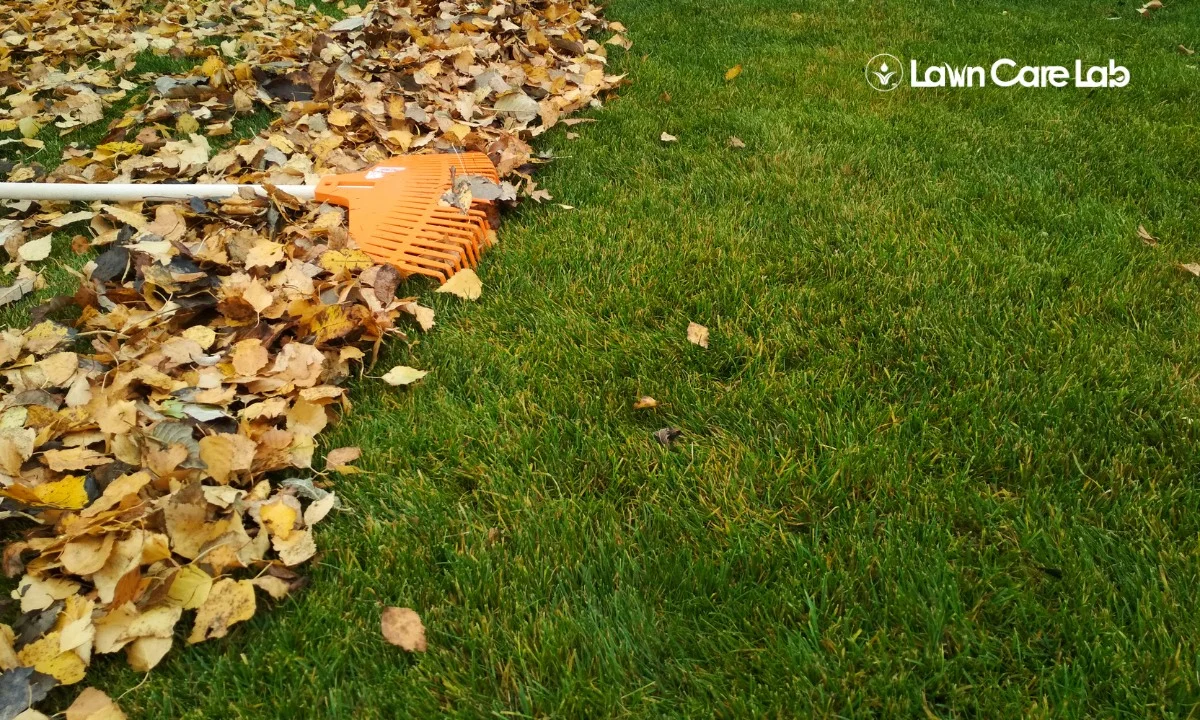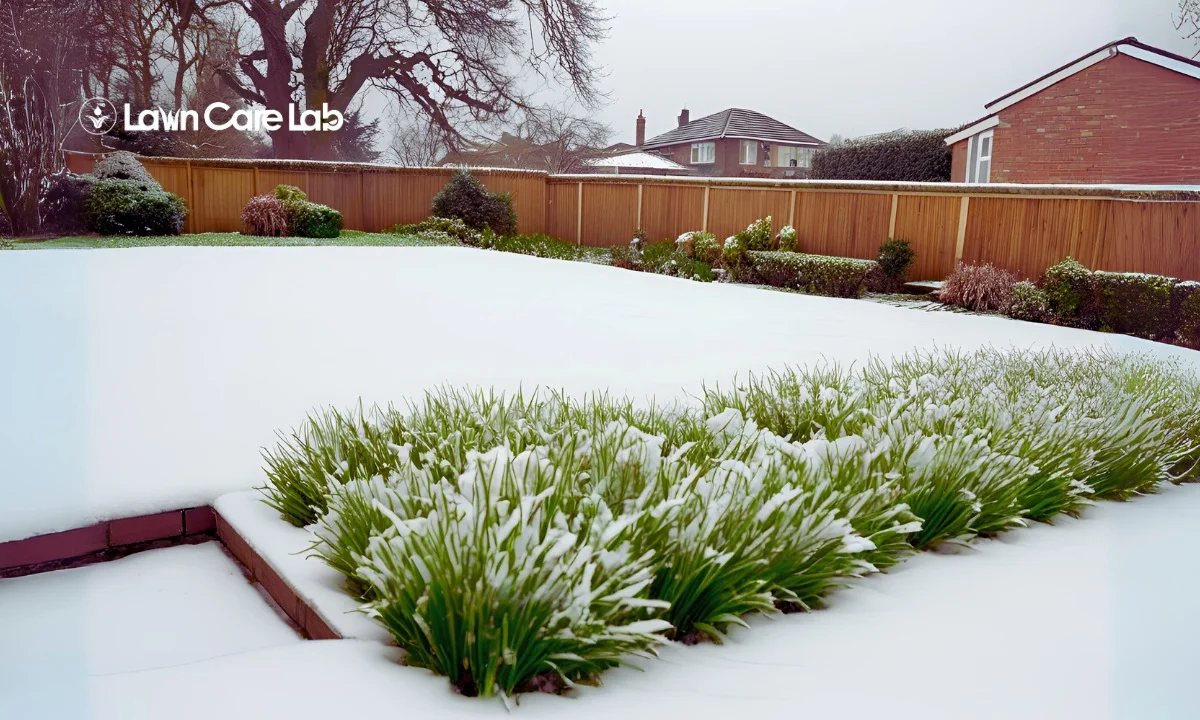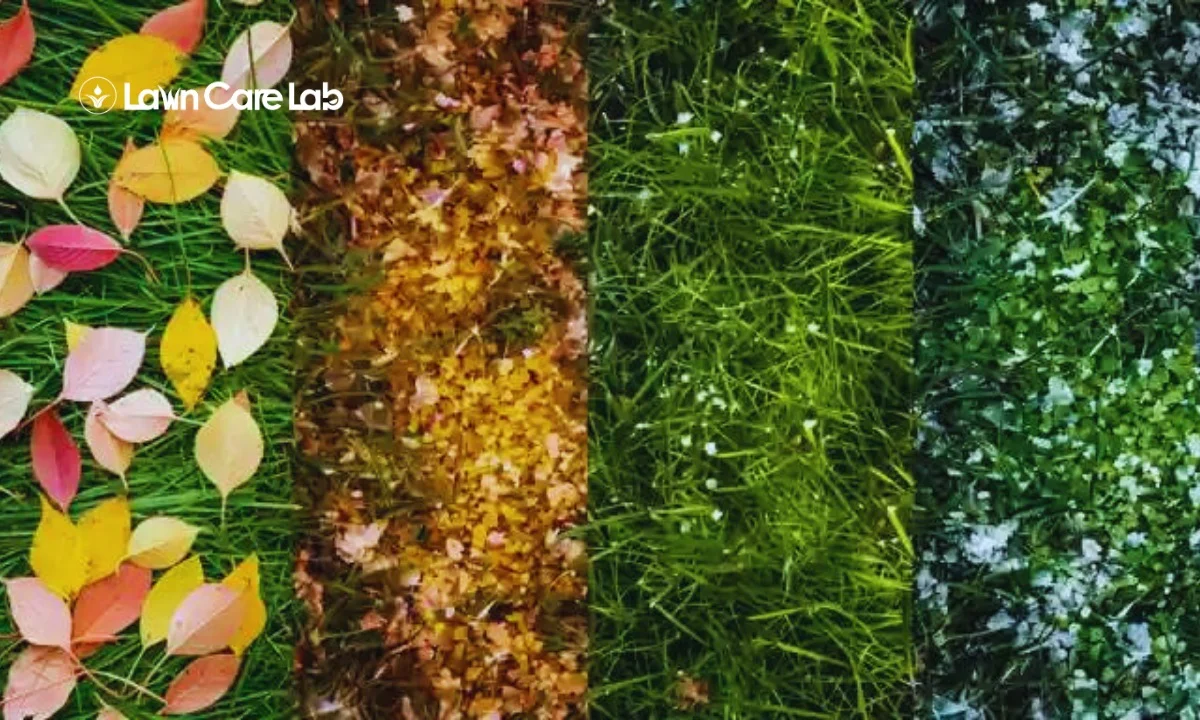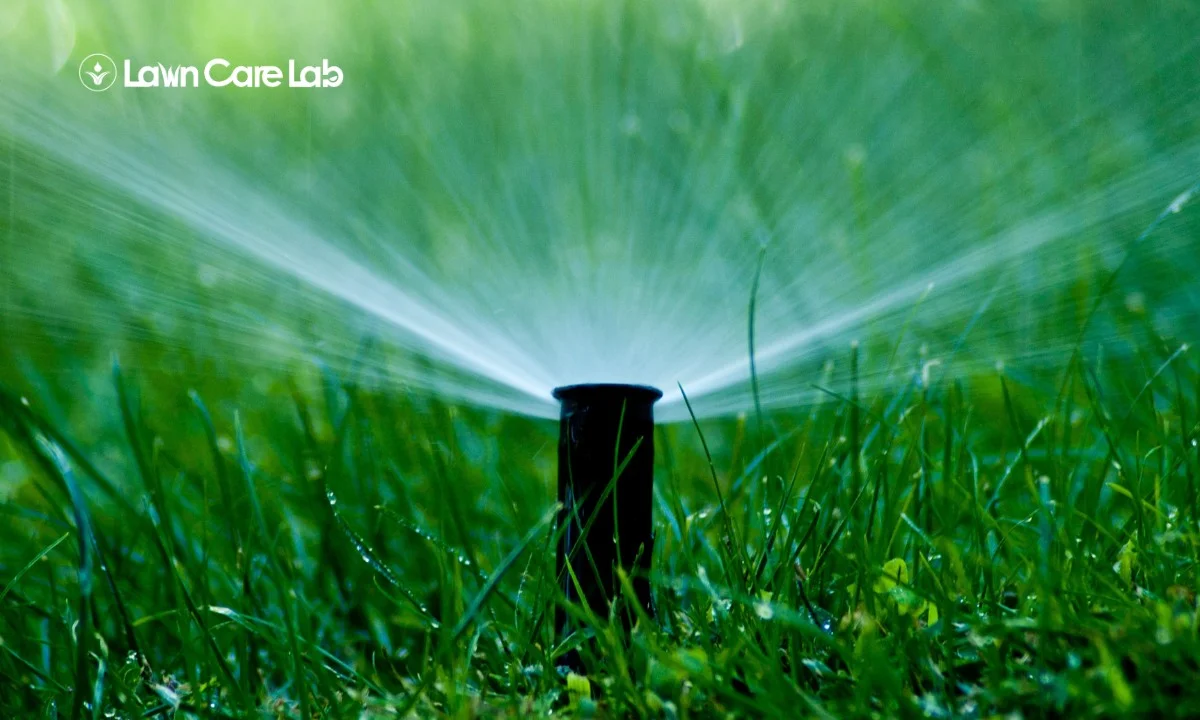Crisp air and changing leaves signal autumn’s arrival. Now is the time to transition your lawn care and prepare your yard for colder weather. Don’t let your turf grass become an afterthought once summer fades.
Follow this complete Fall lawn care guide for September lawn maintenance. Wave goodbye to a tired, struggling lawn and embrace an invigorated green oasis this fall!
We have all your advice from preparing for colder weather to addressing stubborn weeds. Let’s explore your September maintenance tips for a lush, healthy yard.
Table of Contents
Prepare Your Lawn for Colder Weather Ahead
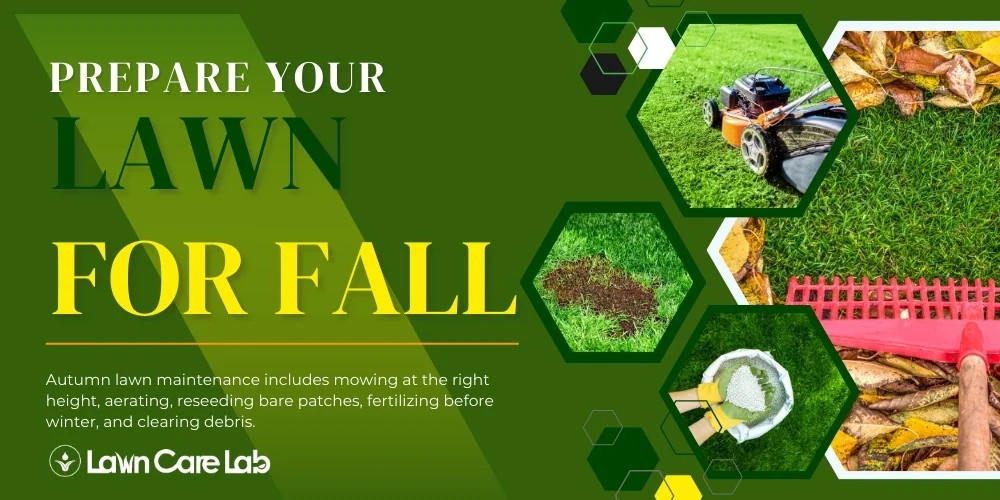
Autumn lawn maintenance includes mowing at the right height, aerating, reseeding bare patches, fertilizing before winter, and clearing debris.
We’re going to cover all these aspects. Get ready; it’s time to prepare your lawn for the winter season.
Mow at the Proper Height
In the fall, keep your lawn’s mowing height between 2-3 inches to allow more sunlight and help your grass grow thicker.
Here are some lawn care suggestions for September:
- Gradually decrease mowing height over several weeks.
- Avoid cutting it too short – you’re not trying to give your lawn a buzz cut!
- Leave some leaf blades so your lawn can store energy.
- Maintain your lawn in the fall by keeping mower blades sharp.
- A clean cut prevents unnecessary tearing and damage.
- Consider it more like giving your grass a tidy trim rather than a rushed haircut.
Follow these steps for fall lawn care to keep your lawns healthy!
Aerate the Lawn
To promote the root health of your lawn, it’s best to aerate your lawn during cooler temperatures. September is the ideal time for fall lawn care.
| Core Aeration Machine | Garden Fork |
|---|---|
| Extracts soil plugs | Manual technique |
| Swiftly covers extensive areas | Provides good exercise |
Both tools are highly effective in prepping your lawn for the fall.
After aeration, it is important to topdress the lawn with compost. This process replenishes your yard’s ecosystem and preps it for winter.
Overseed Bare Spots
Fall lawn care services highly recommend overseeding the bare spots in your lawn.
Here are the tips:
Overseeding repairs bare spots caused by traffic, pets, or disease. Remove debris, loosen soil, and fill low areas with topsoil.
Choose cool-season grass varieties suited for the local climate.
Distribute seed per label rate and rake lightly to cover.
Keep seeds moist by watering 3 times daily until 1-inch growth. This restores a lush lawn appearance.
Preparing your lawn in the fall leads to a healthy, lush lawn in the spring!
Fertilize Before Winter
Applying fertilizer to your lawn before winter is essential.
Here are concise tips for fertilizing lawns before winter:
- Fertilize 6-8 weeks pre-frost for nutrient uptake before dormancy
- Use balanced and slow-release fertilizers like 10-10-10 to avoid excess growth
- Replenish potassium for cold tolerance.
- 0.5-1 lb nitrogen/1,000 sq ft fuels roots, not growth
- Water in fertilizer and supplement iron for color
- Don’t fertilize too early or after dormancy.
Fertilize in late September for optimal nutrient absorption by the roots and to avoid late growth in cold weather.
Remove Leaves and Debris
Maintaining your lawn during fall involves keeping it clear of leaves and other debris hindering sunlight and oxygen.
Here are key tasks:
- Weekly leaf raking or blowing: This isn’t just a seasonal chore; it’s essential for fall yard prep.
- Leaf disposal or composting: You can choose between composting or disposing of them.
Leave some leaves on your lawn, as they can act as a natural fertilizer when decomposing.
The next step is to learn how to protect your lawn against weeds and pests.
Protect Your Lawn Against Weeds and Pests

Protect your lush lawn from pesky weeds and pests with pre-emergent herbicides.
Apply Pre-Emergent Herbicide
Applying pre-emergent herbicide in September prevents weed growth, including crabgrass dandelions and foxtail, which is important for lawn care.
Apply pre-emergent based on weed types in early spring per instructions, avoiding interference with lawn seeding by timing it when the soil cools.
Aerate and overseed before applying in the fall for good seed-to-soil contact. Timing is key for effective pre-emergent and weed prevention.
Stay tuned as we’ll discuss how to treat grubs and other pests next.
Treat for Grubs and Other Pests
Grubs, chinch bugs, and armyworms often infest lawns in the fall, causing dead patches and dry spots.
Treating early with insecticides like carbaryl and trichlorfon or organic options like beneficial nematodes or milky spore is key to preventing larger infestations later.
Carefully following product instructions when treating this fall ensures a healthy lawn without pest damage.
Adjust the Watering Schedule for Cooler Weather
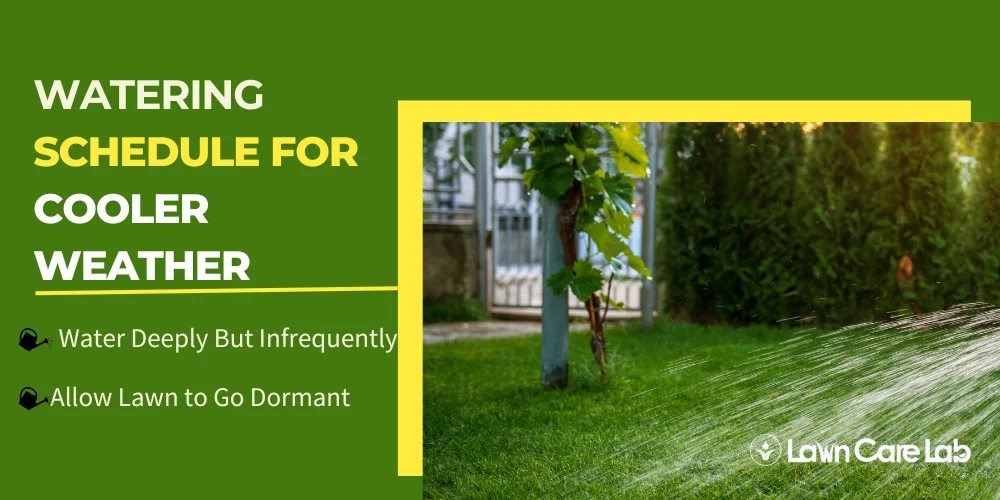
Water Deeply But Infrequently
As temperatures fall, gradually reduce the frequency and duration of lawn watering. Aim to water deeply but infrequently, applying 1-1.5 inches of water per week based on soil probe checks. Water early in the day to allow time for drying before night.
Proper water reduction hardens grass plants for winter dormancy.
Allow Lawn to Go Dormant
Allowing lawns to go dormant in winter is natural and aids grass survival.
Avoid watering once frost arrives to prevent freezing roots. While appearing dead above ground, dormant lawns remain alive below. Reduced fall and winter watering hardens grass plants, enabling quicker spring green-up when growth resumes.
Create Your Checklist for Fall Lawn Care
Your lawn may seem like a simple patch of green, but it requires more care than expected.
Here are some essential lawn care tips for the fall months of September, October, and November.
September Lawn Care Tips
September is a crucial month for lawn care. It’s time to start overseeding bare patches and aerating compacted soil. Here’s a suggested action plan:
- Overseed and Aerate:
- Overseed effectively, ensuring each bare patch is addressed.
- Aerate your lawn to help it breathe and absorb nutrients better.
- Weed Control, Fertilization, Pest Treatment:
- Use pre-emergent weed control to protect your lawn from unwanted plants.
- Feed your lawn with balanced turf food to promote healthy growth.
October Lawn Care Tips
In October, continue mowing at lower heights while blades remain sharp, treat any leftover weed and pest issues, remove fallen leaves promptly to prevent smothering grass, adjust watering for cooler weather, and prepare equipment for winter storage to ensure a smooth transition into the off-season.
November Lawn Care Tips
It’s November, and your lawn still needs attention. Follow these tips for a healthy lawn.
- Mow your lawn before winter.
- Clear all sticks, leaves, and other debris. Think of it as a deep cleaning for your yard.
- Apply winterized fertilizer if you wish. This acts as a protection for your grass during the harsh winter.
- Cease watering unless there’s a severe drought. Cold weather does not eliminate the need for hydration.
November lawn care is manageable and important. Now, go out there and keep your lawn in top shape!
Consider Fall Lawn Care Guide through Services
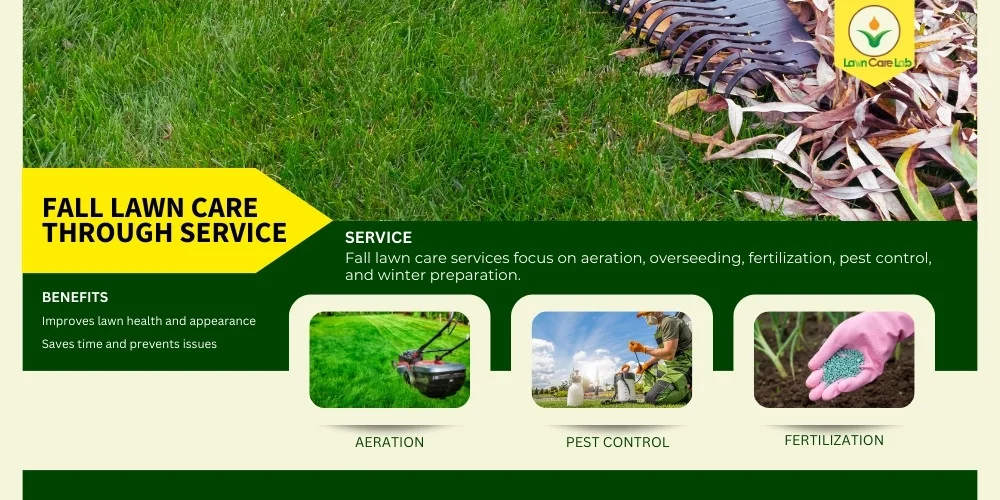
So, you’ve chosen to employ a professional for your lawn care requirements this fall? That’s a smart move!
We will discuss aeration, overseeding, fertilization, and pest control here.
Aeration
Aerating in early fall relieves soil compaction, reduces thatch buildup, and enables deeper rooting before winter dormancy.
Use a core aerator and target mid-August to mid-September for cool-season grasses when soils are still warm, but temperatures are cooler.
Combine with overseeding to fill bare spots in the loosened soil.
Proper fall aeration every 1-3 years leads to thicker, greener, and healthier turf grass.
Overseeding
Overseeding can help achieve a lush lawn without the expense and pain of hair transplants.
Slice seeders create precise furrows for seeds, better than random scattering.
Below is a brief comparison:
| Method | Seed-to-Soil Contact | Germination |
|---|---|---|
| Overseeding | Average | Unpredictable |
| Slice Seeding | Excellent | Highly reliable |
Overseeding requires prep work like dethatching and aerating, but the result is a vibrant green lawn.
Fertilization
Fertilization is key for a healthy lawn – it provides essential nutrients for growth and enhances its appearance.
Here are some important points about fertilization:
- Customized Fertilizer Programs: Designed according to your lawn’s specific needs.
- Comprehensive soil testing: Each soil type requires a different approach, so we base our programs on thorough testing.
- Application by Professionals: Skilled technicians carry out the task, as not everyone has expertise in lawn care.
- Proper application rates and suitable products: We only use what’s best for your lawn.
Pest Control
To protect your lawn from harmful pests like grubs and chinchbugs, it’s best to hire professional exterminators. These experts use top-quality insecticides and their knowledge to eliminate these pests effectively.
Get rid of armyworms in September with professional support.
Enjoy a pest-free yard and a rejuvenated lawn this autumn.
Conclusion
Consider your lawn as a stage. September is the critical period when you should give your all for the upcoming winter season. Ensure to control weeds and pests, adjust irrigation, and follow your checklist closely.
If you find it difficult to manage, don’t worry; you can always hire professionals. Remember, even Spielberg required a team!
So go ahead, and provide your lawn the care it needs before winter!
FAQ on Fall Lawn Care:
What Types of Grass Are Best Suited for Fall Planting?
How Can I Safely Dispose of Fallen Leaves Without Harming the Environment?
What Are Some Eco-Friendly Alternatives to Chemical Fertilizers for Fall Lawn Care?
Is It Possible to Over-Seed the Lawn During the Fall Season?
What Are Some Cost-Effective Tools and Equipment Necessary for Fall Lawn Maintenance?
- How to Create a Lawn Care Schedule for Southern Climates - October 30, 2024
- How to Use Compost Tea to Boost Lawn Growth and Soil Health - October 23, 2024
- The Best Grasses for Saltwater-Exposed Lawns: Coastal Lawn Care - October 17, 2024

